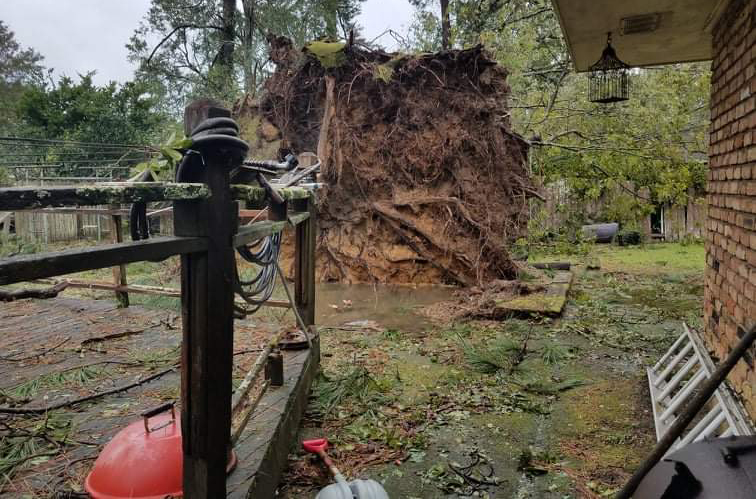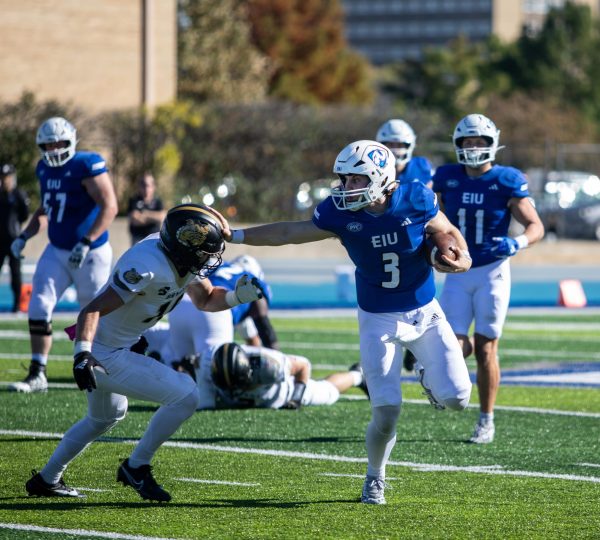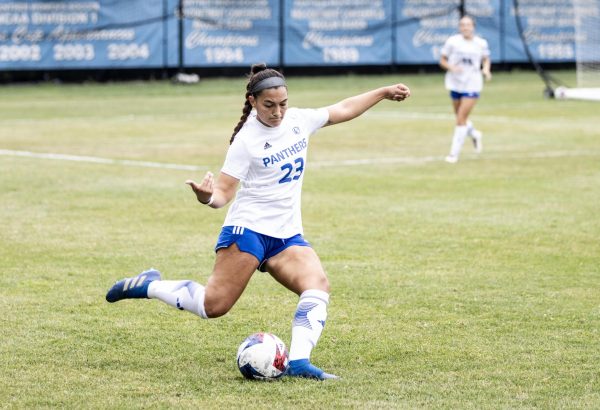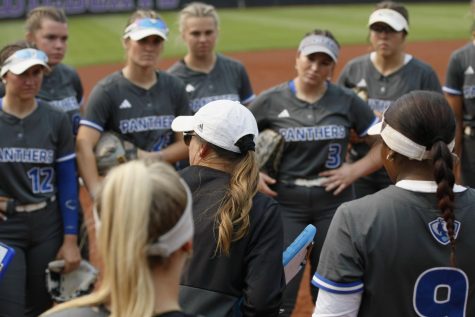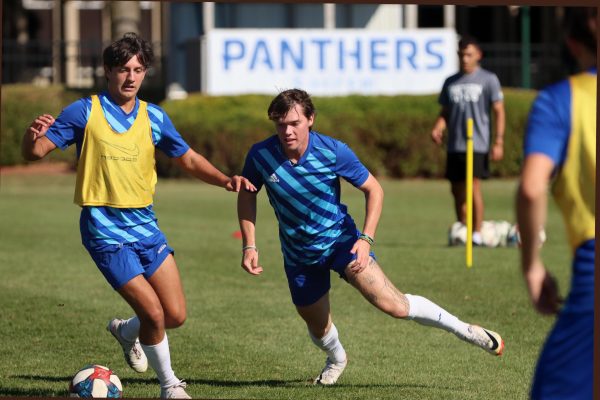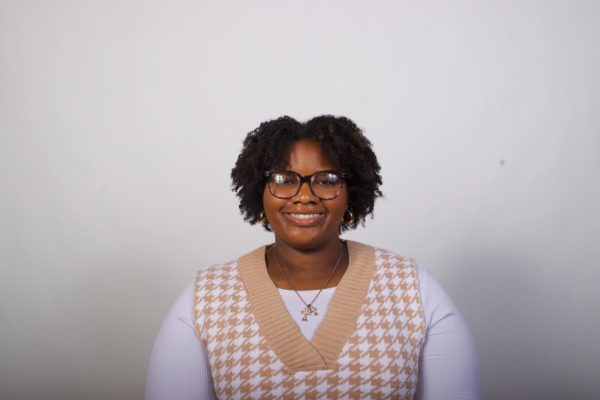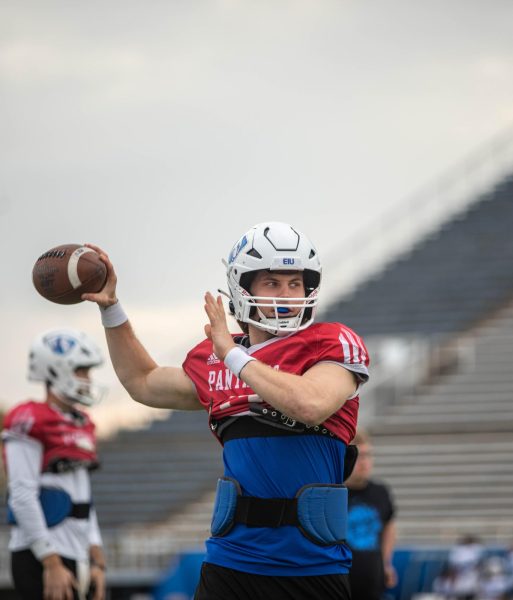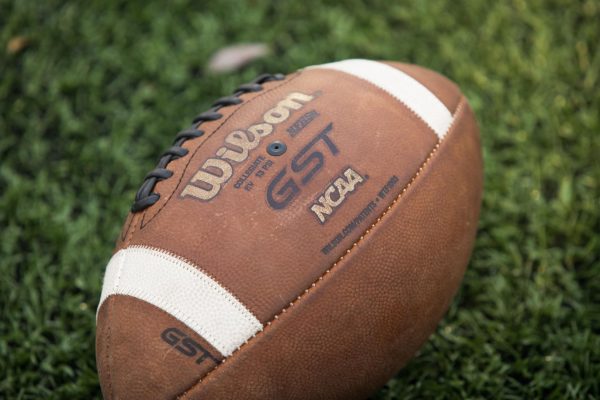Ayap far from home as Louisiana recovers
A large fallen tree sits in Julie Ayap’s backyard in Hammond, Louisiana in the aftermath of Hurricane Ida. Julie Ayap is the mother of Jehan Ayap, an athletic trainer at Eastern.
September 7, 2021
Thousands of Louisianans spent the night of August 29 hoping their preparations were enough as Hurricane Ida made landfall- a situation Eastern Athletic Trainer Jehan Ayap knows all too well. Exactly 16 years prior, Ayap found herself at a teammate’s house in Gonzales, Louisiana with these same hopes as Hurricane Katrina wreaked havoc on the southeastern part of the state.
Now, being nearly 700 miles away from her parents and hometown of Hammond, Louisiana, all Ayap can do is watch as her community picks itself back up after Hurricane Ida’s devastating blows.
Loss of life, flooding, structural damage, and a massive loss of power have all been left in the wake of Ida. As of Monday, nearly 486,000 homes and buildings remained without power in Louisiana, which has resulted in a shortage of fuel, lack of water pressure, and problems at water treatment plants.
Several oak trees surrounding Ayap’s parents’ house fell during the storm, all barely missing their home. Ayap realizes that if these trees would have fallen six inches one way or the other, the result could have been very different.
“You look at it and it’s bad, but then you take another look and realize it could’ve been way worse,” Ayap said.
Ayap felt grateful her parents safely outlasted the 16 hour storm, but a feeling of worry still remains with her a week after Hurricane Ida’s landfall. Pictures of flooded streets, fallen power lines, and crumbling buildings have overtaken her social media, and all she can do is watch.
“Every day this week I’ve been glued to my phone and computer watching what’s going on down there,” Ayap said. “Being so far away, you do feel helpless.”
Despite not physically being in her hometown, Ayap is comforted by the multitude of social media posts detailing community members coming together. Neighbors giving out free hot meals and cases of water, and helping each other clean up debris overshadows the pictures of the damage on Ayap’s feeds.
“When these types of storms come through, you really see a resilience in the community and you see people being neighborly,” Ayap said.
The sense of community fostered over the past week is nothing new. Resiliency was key during the aftermath of Hurricane Katrina, which resulted in over 1,800 deaths, thousands of people displaced from their homes, and $108 billion in damage.
When Katrina hit in 2005, Ayap was a freshman on the soccer team at Southeastern Louisiana University in her hometown. Not even a week into classes and her first collegiate season, Ayap and her teammates were advised to evacuate campus.
At first, there was no convincing Ayap of leaving her family and hometown behind, but eventually her parents were able to reassure her they would be fine. Ayap and eight of her teammates packed a bag and headed west out of the path of Katrina, but she did not bring with her much fear about the hurricane.
Growing up in Louisiana, Ayap had been through many hurricane seasons, so she was not overly concerned before Katrina made landfall. Even while the storm was passing through, Ayap and her teammates were not consumed with worry; they were too busy with their own experiment.
To test just how strong the wind from Katrina was, the girls wrapped Ayap’s entire body in plastic saran-wrap and took her outside. Their hypothesis was proven true when Ayap’s whole body was knocked flat on the ground.
“We were kids going out there probably doing stuff that we shouldn’t have done,” Ayap said. “Even though it was this dire circumstance, we still tried to make it fun.”
After about a week away, the team returned to campus, which had suffered aesthetic damages, but was overall structurally intact. Ayap and her teammates cleaned debris off their field and eventually determined they would be able to salvage the season.
Ayap was happy to be back to her daily student-athlete routine at school, but the struggles of those in the area who were not as fortunate still weighed on her. She recalled hearing the constant sound of helicopters heading towards New Orleans during practice.
“I’d go to practice then go home and watch the news to see people still evacuating and trying to get rescued,” Ayap said.
This created a greater purpose for the team as they strived for wins. Ayap said her team was privileged to be able to continue to play, so the least they could do was be an outlet for the community.
“At least for two hours, if they could come and watch this game, then maybe they could get a two hour break from having to clean out their flooded house,” Ayap said.
Ayap’s team also spent much of their free time in the community cleaning up debris wherever they could. She said the community had always done so much for them, so the decision to help was a no-brainer.
Ayap said that history will repeat itself now with Ida.
Clean-up efforts will be heavily fueled by the community, with an emphasis being placed on neighbors checking on one another.
Ayap’s mother, Julie Ayap, felt happiest when she was finally able to check on her neighbors after the storm. After being trapped at home for a few days due to trees blocking the main road, Julie Ayap was able to help her friends clean up their home, which had taken water for the first time in the 30 years they had lived there.
Like her daughter, Julie Ayap overwhelmingly feels a sense of gratitude for the safety of her family and friends, as well as the minimal damage to her home. Despite the negative situation, she still appreciates what may seem like even the smallest victories.
“All of the traffic lights are off, but everyone is being really courteous,” Julie Ayap excitedly said to her daughter over the phone.
What Louisiana lacks in power, they have gained in better drivers on the road, according to Julie Ayap.
Lauren Frick can be reached at 581-2812 or [email protected].






































